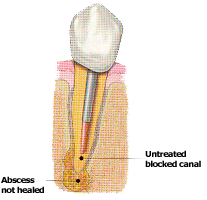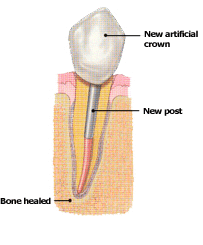
Call us to book an appointment.
Suite 235,
Mississauga,
ON L4Z 1H8

As occasionally happens with any dental or medical procedure, a tooth may not heal as expected after initial treatment for a variety of reasons:
In other cases, a new problem can jeopardize a tooth that was successfully treated. For example:

First, the endodontist will discuss your treatment options. If you and your endodontist choose retreatment, the endodontist will reopen your tooth to gain access to the root canal filling material. In many cases, complex restorative materials - crown, post and core material - must be disassembed and removed to permit access to the root canals.
After removing the canal filling, the endodontist can clean the canals and carefully examine the inside of your tooth using magnification and illumination, searching for any additional canals or unusual anatomy that requires treatment.
After cleaning the canals, the endodontist will fill and seal the canals and place a temporary filling in the tooth. If the canals are unusally narrow or blocked, your endodontist may recommend endodontic surgery. This surgery involves making an incision to allow the tip of the root to be sealed.
After your endodontist completes retreatment, you will need to return to your dentist as soon as possible to have a new crown or other restoration placed on the tooth to protect and restore it to full function.

Whenever possible, it is best to save your natural tooth. Retreated teeth can function well for years, even for a lifetime.
Advances in technology are constantly changing the way root canal treatment is performed, so your endodontist may use new techniques that were not available when you had your first procedure. Your endodontist may be able to resolve your problem with retreatment.
Ultimately, your treatment decision should be based on a strategy you have discussed with your dental team, and you agree is best for your overall health.